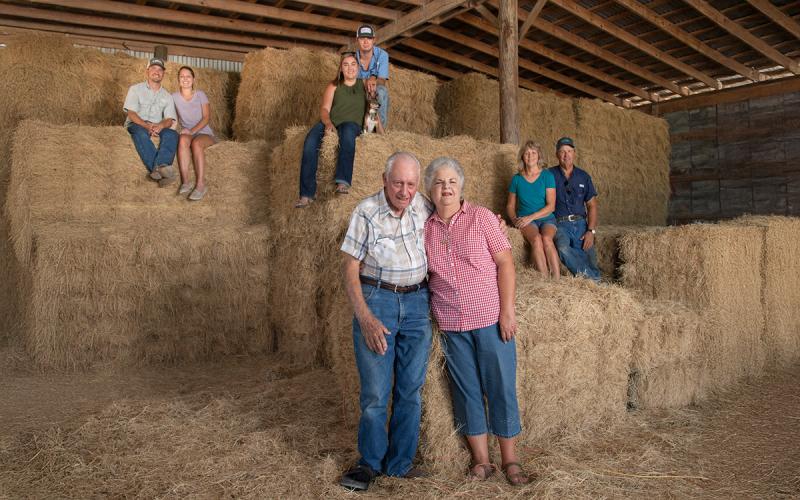Significant education efforts for natural resource conservation have occurred in South Dakota during the last five years. Many stakeholder groups have brought awareness for soil health and water quality to the forefront. Food security is the core mission of these efforts as population increases, natural resources are challenged, and climate extremes are experienced.
Census of Agriculture Findings
Evaluating progress for adopting sustainable and regenerative practices is difficult. The Census of Agriculture (USDA/NASS) is a good evaluation tool because producers are contributing with their actual on-farm information. The 2017 Census of Agriculture was recently released and provides a good opportunity for land use trend evaluation.
Tillage, cover crops, tile drainage, commercial fertilization and organic food production are reviewed in Table 1.
| Land Use Practice | 2012 | 2017 | difference | % change | |
| No-Till | |||||
| Farms | 7462 | 7774 | 312 | +4 | |
| Acres | 7,158,414 | 7,656,188 | 497,774 | +7 | |
| Conservation Tillage | |||||
| Farms | 5017 | 6185 | 1168 | +23 | |
| Acres | 3,460,096 | 4,300,330 | 840,234 | +24 | |
| Intensive Tillage | |||||
| Farms | 8421 | 4979 | -3442 | -41 | |
| Acres | 4,012138 | 2,674,732 | -1,337,406 | -33 | |
| Cover Crops | |||||
| Farms | 1369 | 2154 | 785 | +57 | |
| Acres | 149,383 | 281,649 | 132,266 | +89 | |
| Tile Drainage | |||||
| Farms | 2105 | 2485 | 380 | +18 | |
| Acres | 390,572 | 658,711 | 268,132 | +68 | |
| Commercial Fertilizer | |||||
| Farms | 15,887 | 15,535 | -352 | -2 | |
| Acres | 11,331,665 | 11,331,760 | 95 | +<0.01 | |
| Organic | |||||
| Farms | 78 | 209 | 131 | +168 | |
| Acres | NA | 42,495 | NA | NA | |
Source: USDA/NASS 2012 and 2017 Census of Agriculture
Tillage
The number of no-till farms and acres increased 4 and 7 percent, respectively. Farms using conservation tillage rose 23 percent with acres increasing 24 percent. The number of farms using Intensive tillage practices sharply decreased by 41 percent with a 33 percent decrease in acres. The tillage trends are very positive towards conserving our most important soil resource. However, a significant amount of education needs to happen to encourage more producers to adopt no-till and conservation tillage.
Cover Crops
The number of farms using cover crops increased 57 percent which supported an 89 percent increase in acres. Since the number of acres increased at a much higher rate when compared to the number of farms, this could indicate that farms that had previously grown cover crops, used them on more acres on their farm. This could indicate these farmers found benefits to cover crops and were willing to expand their use to more acres.
Tile Drainage
Farms installing tile drainage increased 18 percent while the number of acres increased by 68 percent. Much like the possible response of farmers to cover crops the similar conclusion could be made for tile drainage. The farmers that had previously installed tile drain invested in more on their farms.
Commercial Fertilizer
Commercial fertilizer use remained relatively constant, with a slight decrease in number of farms and a very small increase in the number of acres.
Organic Farms
The largest percent change in any land use practice came with the number of organic farms which were up 168 percent. Acres were not previously reported however there was only 42,495 acres of organic production in South Dakota during 2017.
The Bottom Line
Land use trends supporting natural resource conservation are very encouraging and the stakeholder groups educating farmers about soil health and water quality should feel their efforts are successful but at the same time accept the challenge to continue their efforts.


